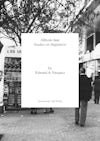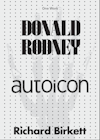Content
Thomas Hirschhorn’s Deleuze Monument was conceived for ‘La Beauté’ in Avignon in 2000. It comprised four elements: a rock inscribed with a quotation, an altar, a monumental sculpture and a library including books by and about Deleuze. Located in the Cité Champfleury, outside Avignon’s historical walls, Deleuze Monument embodied Hirschhorn’s desire to put his work ‘in a difficult situation’ between reality, politics and aesthetics, and marks a significant turning point in his approach to producing and maintaining public works.
In this generously illustrated book, Anna Dezeuze examines Deleuze Monument, the second in Hirschhorn’s series of four Monuments, and its relation to ‘scatter’ and participatory art in the 1990s. Drawing on Deleuze’s ideas as well as Hannah Arendt’s definition of work, labour and action, Dezeuze demonstrates how Deleuze Monument brought art and philosophy together in a ‘concrete’ way.




